I turned back to the van. Time to go home. It was then that I glimpsed, across the golden Lammas field opposite, an impossibly huge orange moon rising just above the tops of the trees. I actually gasped; so unexpected and glorious was it. From my notebook, August 2022
All gathering sit on stubbs or sheaves the hour
Where scarlet poppys linger still in flower
Stript in his shirt the hot swain drops adown
And close beside him in her unpind gown
Next to her favoured swain the maiden steals
Blushing at kindness which her love reveals
Who makes a seat for her of things around
And drops beside her on the naked ground
Wearied wi brambles catching at her gown
And pulling nutts at branches pulld adown
By friendly swain the maid wi heaving breast
Upon her lovers shoulder leans at rest
Then from its cool retreat the beer they bring
And hand the stout hooped bottle round the ring
John Clare, from ‘August’, The Shepherd’s Calendar
Stained glass panel, Edgefield church, Norfolk
Hello again lovely people, and welcome to this newsletter for the August full moon.
Now, when I say the full moon I should be more specific and refer to it as the first full moon in August, as there are going to be two! The other August moon will be what is usually known as a Blue Moon, being the second full moon in a single month, and we will talk about that when it happens. Apparently, astronomically speaking it’s actually incorrect to call it ‘blue’ as that term means something else altogether. But let’s not get bogged down in that yet :)
Not only do we have a full moon, but it’s a Super Moon, meaning that it will appear bigger and brighter than usual. And perhaps even more excitingly, 1 August is usually the date celebrated in the Wheel of the Year as Lammas or Lughnasadh so everything is colliding in a giant splash of magical energy. It feels like a ‘big’ moon in more ways than one.
We have a lot to get through in this issue, as the Lammas stories have been massing and jostling and calling ‘choose me!’. So I’ll try to make this a sprint through the names that have, at one time or another, been given to this Moon. A moon that I have watched waxing to full while it brushed the bleached grasses with silver and gilded the blades of the combine harvesters as they worked far into the night.
As usual, the name you most often see cited is a Native American one, Sturgeon Moon; so called because of the abundance of sturgeon in the Great Lakes and Lake Champlain at this time of year. But elsewhere in North America, different seasonal landmarks are commemorated. The August full moon is called the Feather Shedding Moon by the Passamaquoddy tribe of the northeast, the Geese Shedding Their Feathers Moon by the Arapaho of the central plains, and the Moon Young Ducks Begin to Fly by the Cree of eastern and central Canada.
I have read that the Celts called this moon Dispute Moon or Lynx Moon, both of which are intriguing, and the Anglo-Saxons, Grain Moon. Other English names are Corn Moon and Lightning Moon. The latter is often very appropriate at this time of year, as sultry days explode into summer storms. Michael Howard in Liber Nox offers Barley Moon and Fiona Walker-Craven in 13 Moons, Wort Moon.
What would you choose to reflect the seasonal changes where you live? For myself I think I’d go for Bramble Moon or Blackberry Moon. Yes, I know they both really mean the same! But it’s interesting how the words themselves feel different on the tongue. I can’t choose between them, and that got me thinking.
My mum was a prolific jam maker and I remember that on those narrow white biro-written labels it was always ‘Blackberry Jam (seedless)’ but 'Bramble Jelly’, even if the blackberries for both had been picked at the same time. Does anyone know why this should be? I have a feeling it was because Bramble Jelly also contained apples, not that that makes it any more logical!
Full Moon: one year ago
Happisburgh, on the cliff top.
I didn’t see the full moon from the cliff top last night as clouds rolled in and veiled the horizon. But what a beautiful summer evening to be watching and waiting for the moment of its emergence from the waves at the edge of the world.
The balmy evening, sunset, twinkling lights out at sea,
Flashes from the lighthouse gradually becoming more insistent as darkness fell - these were treasure to be savoured in their own right.
And before me on the cliff path, a twilight muntjac kicked up its heels and I felt the first bat flutter by.
A Talisman for the Gift of Fish
St Jude from Swanton Abbott church, Norfolk. See how detailed (and flimsy) his fishing boat is.
High on the cliff top, a woman, dark skirts flapping like a crow, stares anxiously out to the horizon. She presses the side of her left hand to her forehead and squints, willing her eyes to penetrate the sea fret that obscures the thin line between sky and foam-laden waves.
The waves. She doesn’t need to see those. The urgent crash and roar assailing her ears tells her all she needs to know.
Was that a lantern light? The creak of an oar? Her basket is by her side; a talisman for the gift of fish; but more than this for the strong young husband whose life, she she knows, hangs ever on a thread in these treacherous waters.
Today is Lammas and we’re celebrating the first harvests of the earth, but when I wander on the cliff top I always find myself thinking about the harvest of the sea too, and all that it has meant to human lives.
If you read Bracken & Wrack you’ll soon realise that I absolutely love medieval painted rood screens. The stories behind the scratches, weathered colours, fragility, what they reveal to us about the souls of our ancestors, a quiet magic.
Our Norfolk screens commonly depict varying numbers of the Apostles on their wooden panels. Often, and perhaps especially close to water (though that is something that needs a bit more research I think!) St Simon and St Jude are among them - and always side by side. They are fishermen: St Simon shows us fish while St Jude holds up his fishing boat. I feel certain that their presence would have been of great comfort to fishing communities as they could be petitioned for help both with the size of a catch and safe return from the sea.
This St Simon and St Jude are from Belaugh church, overlooking a meander in the River Bure. Don’t you just love St Simon’s fishes with their characterful faces? I’ve also included St Jude from Swanton Abbott church. The painting styles are different but isn’t it interesting how similar the boats are? Surely here we are getting an insight into what a real medieval fishing boat looked like. Such a slight and flimsy thing between the fisherman and the might of the wind and waves.
St Simon with his fishes, Belaugh church, Norfolk.
St Jude with his fishing boat, Belaugh church, Norfolk.
On Cotswold edge there is a field and that
Grows thick with corn and speedwell and the mat
Of thistles, of the tall kind; Rome lives there,
Some hurt centurion got his grant or tenure,
Built farm with fowls and pigsties and wood-piles,
Waited for service custom between whiles.
The farmer ploughs up coins in the wet-earth-time,
He sees them on the topple of crests gleam,
Or run down furrow; and halts and does let them lie
Like a small black island in brown immensity,
Til his wonder is ceased, and his great hand picks up the penny,
Red pottery easily discovered, no searching needed …
One wonders what farms were like, no searching needed,
As now the single kite hovering still
By the coppice there, level with the flat of the hill.
Ivor Gurney, Up There
A Cliff Top Ghost Story
A bowl of blackberries along the lane, 28 July 2022. This year they’re nowhere near ready yet!
Now you may think that this dish of Lammas blackberries is a tenuous link to a cliff top ghost story, but read on and you will see …
If you follow the road through the village (resisting the urge to turn towards the cliff path under the watchful eye of the kestrel), you will soon pass the end of Lighthouse Lane. A little further and you pass into Whimpwell Street. And in the resonant name of that hamlet lies a story.
Where the two settlements met - on a triangle of land that can be seen to this day - there was once a well.
This well was a place of mystery and terror, as it was known to shriek and groan, especially when a storm was brewing. In later years, a pump installed over the top seemed to stop the moans and whimpers. But memories linger long in this hidden corner of Norfolk. When plans were afoot to remove the now-redundant pump there was a loud murmur of unrest. What if the unearthly sounds were to begin again?
The wheezing and groaning had first been heard 200 years prior to this, accompanied by the apparition of a man wearing the canvas clothing and tarred pigtail of a sailor. Approaching from Cart Gap, further along the cliff top, his appearance was gory and he carried a sack in his hand. One night, two villagers followed him and saw him lean forward over the well to drop the bundle into its depths. Then he vanished.
One of the men agreed to be lowered into the well to investigate. What he found was the remains of a long dead man - and a sack containing a pair of sailor’s boots. The sailor and his boots were buried in an unmarked grave in the churchyard.
Yes, the one I pass every time I slip through the gap beside the gate.
Meanwhile, some of the villagers were searching the cliffs at Cart Gap to try to shed some light on the sailor’s story. Deep in a bramble patch (though whether at blackberry time I don’t know) they found the rotting remains of a brandy barrel. Was the tale one of murder following a scrap between smugglers?
House sign on the cliff top at Cart Gap, Norfolk, 26 July 2023.
Now that the well was just a well you’d have thought that the ghostly moans would fall silent. But they stopped only when the iron pump was installed.
For many years, the pump was a gathering place for all the village women and all that could be heard was the latest news and gossip.
By the 1960s every cottage had its own water supply, so the pump fell out of use and it was mooted to do away with this outmoded curiosity. As we have already heard, the idea met with a worried and hostile response.
After all, no-one wants to have to pass a shrieking well at dead of night at the dark of the moon, do they?
Bramble patch at Cart Gap, Norfolk, 26 July 2023
Brazen summer, summer burnished and bold;
the sun exalted, the sky’s hot copper
scalding our eyes, a tingle on the skin
and noon like a ringing of horns
in the hills, like a hammered coin.
The roadside leaves are dusty
and glittering. Between here and the coast
acres of sunflowers turn their polished heads:
gold worshipping gold. Their hearts
are rich oil. They thrust
from cool nourishing darkness into light.
At a low whitewashed house a woman stands
framed in her doorway: by her feet
two cats, one pied, one ginger.
Her hands supporting the jambs
hold the house steady as she gazes
beyond the blazing molten faces
of the flowers, beyond the dug rock
to where the lions are. They flow and circle
on a hot yellow plain, always moving
a little nearer through the dry grass,
muscles woven under satin skin;
their eyes half-closed and gleaming.
Lions moving together, coming at last
to the streets of the city, broad paws
and heavy shoulders spilling round corners
around parked cars, stepping down alleys
staring through windows with their gold eyes.
A stink of beast. The terrible roaring.
Everyone cowering behind locked doors
except one dark child, running out to them.
The woman lifts an arm
and rubs her forehead dry. Sweat stings
the rim of her lids. The cats
stretch and roll, stretch and roll
greedy for sun. She tells them: It is done.
Hilary Llewellyn-Williams, ‘VIII Sun in Leo’, The Book of Shadows(
(In the endnotes to this sequence, Hilary Llewellyn-Williams describes it as a talismanic poem, summoning the virtue of Strength or Fortitude from the tarot. )
Loaf Mass: a charm for abundance
Lammas loaf cooling in the kitchen, 1 August 2023.
At this time of Lammas - ‘Loaf Mass’ - and all the meaning surrounding the gathering in of the first fruits I had a strong sense of wanting to make a harvest plait in celebration.
I began it last night, Lammas Eve, and left it to rise overnight before plaiting it and leaving it to prove again this morning. As soon as the loaf was baked it was time to take it to the beach with a flask of cacao to drink. Breaking that bread under a wide sky in the company of cormorants, gulls and two friends felt sacred indeed.
I based my recipe on a half-remembered Roman Marching Bread one. Whatever you think of the Romans, they did traverse the ways here and are said to have introduced fennel and caraway where they passed. As a charm for abundance I wanted to include something that I’d grown in the garden. Fennel seed was the perfect prayer but there are lots of other things you could try.
When I made the plait last year I found an organic spelt/rye blend that is lower in gluten than strong flour for bread making and feels suitably ancient. But the resulting loaf was a bit dense for my taste so I thought this time I would use white spelt flour for at least half of the required quantity. But use whatever you like as long as it equals 500g.
500g bread flour of your choice
1 rounded tsp easy blend yeast
2 tsp sea salt
350ml warm water
1 tbsp olive oil
1 tsp honey (honey is more Roman but vegans can use sugar or maple syrup)
Seeds etc of choice (I used fennel from the garden)
Place flour, salt, seeds, yeast and oil in a bowl. Mix with hand hot water and honey. Knead for 10 mins then prove in a covered bowl for an hour or more. If you want a plait, divide in three, plait loosely and leave again to rise on a baking sheet. Brush with milk, oat milk or egg wash, sprinkle with flour/oats if wished. Bake 15 mins at 220C, then 30-35 mins at 190C. Cool a little then tear and eat!
Wishing you all a blessed Lammastide.
Lammas ritual on the beach, 1 August 2023. (With butter and honey, yum!)

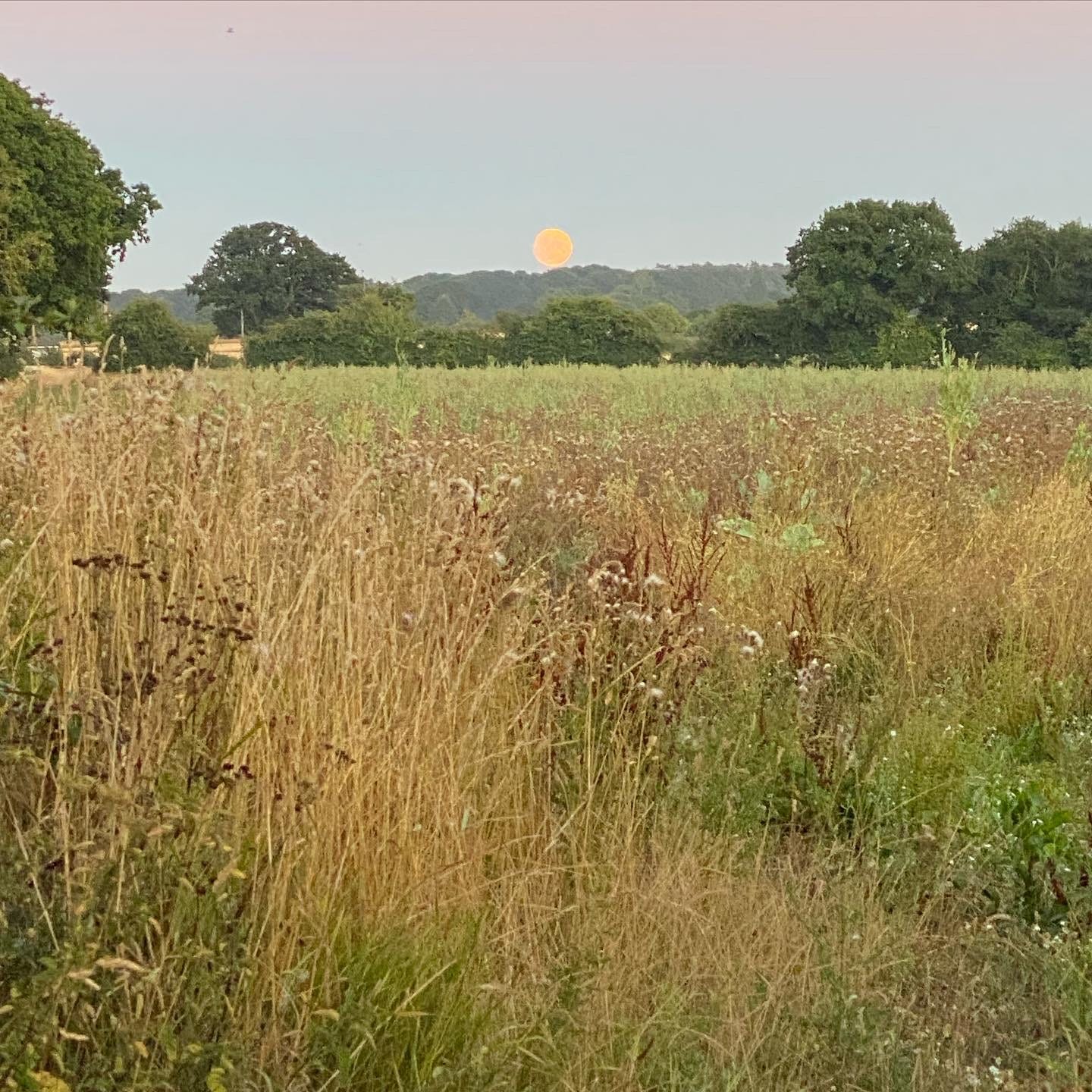
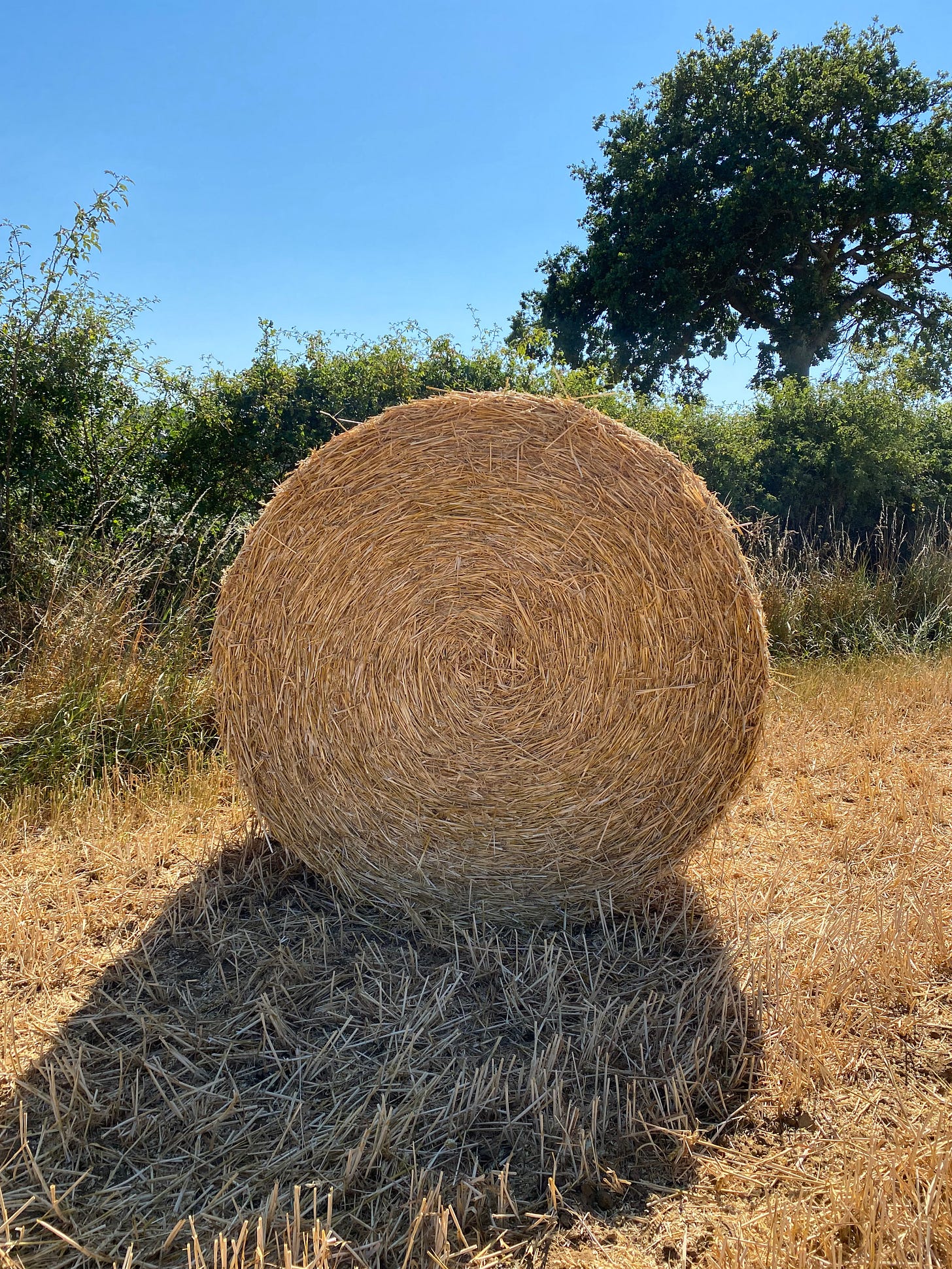
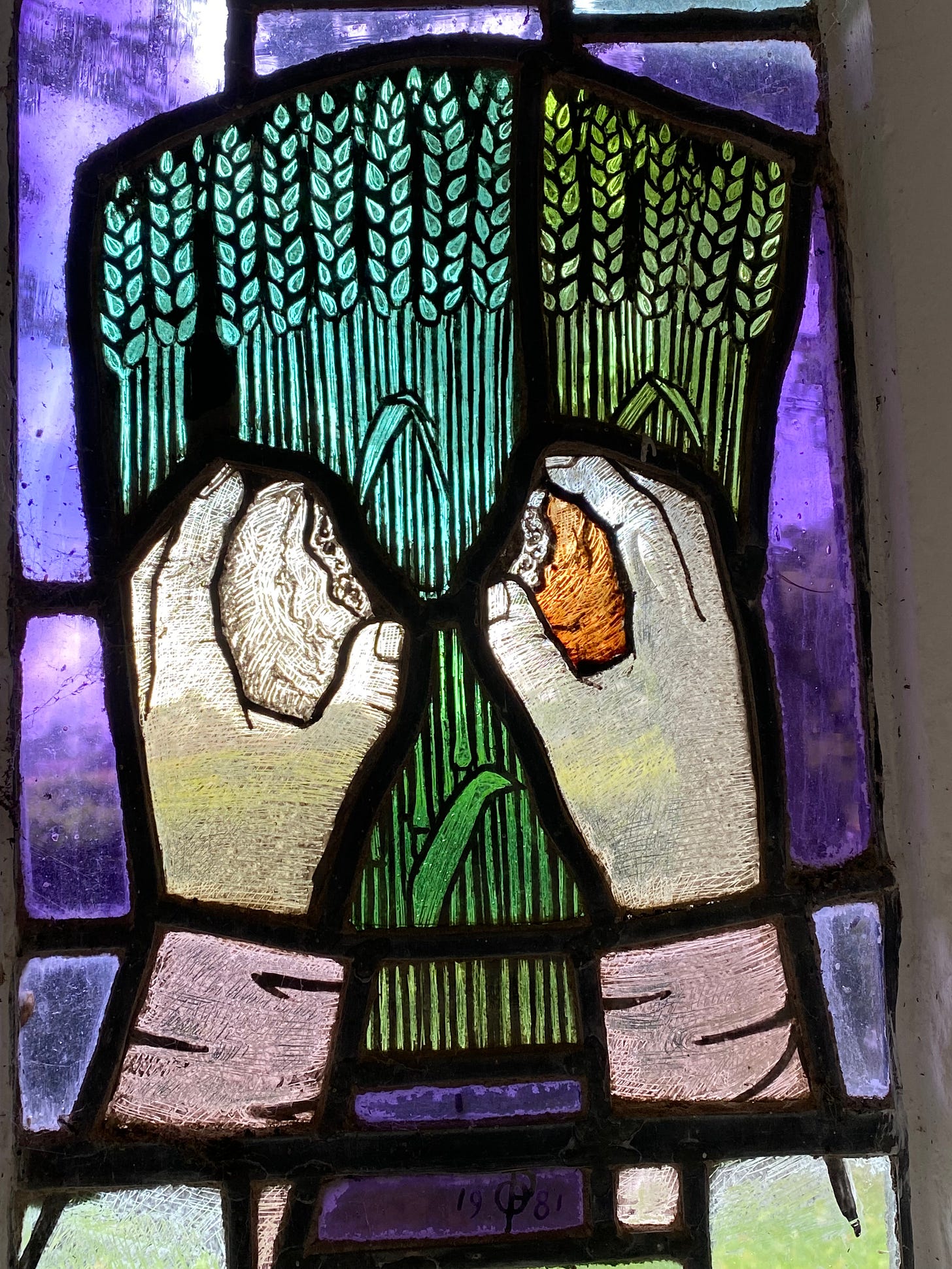
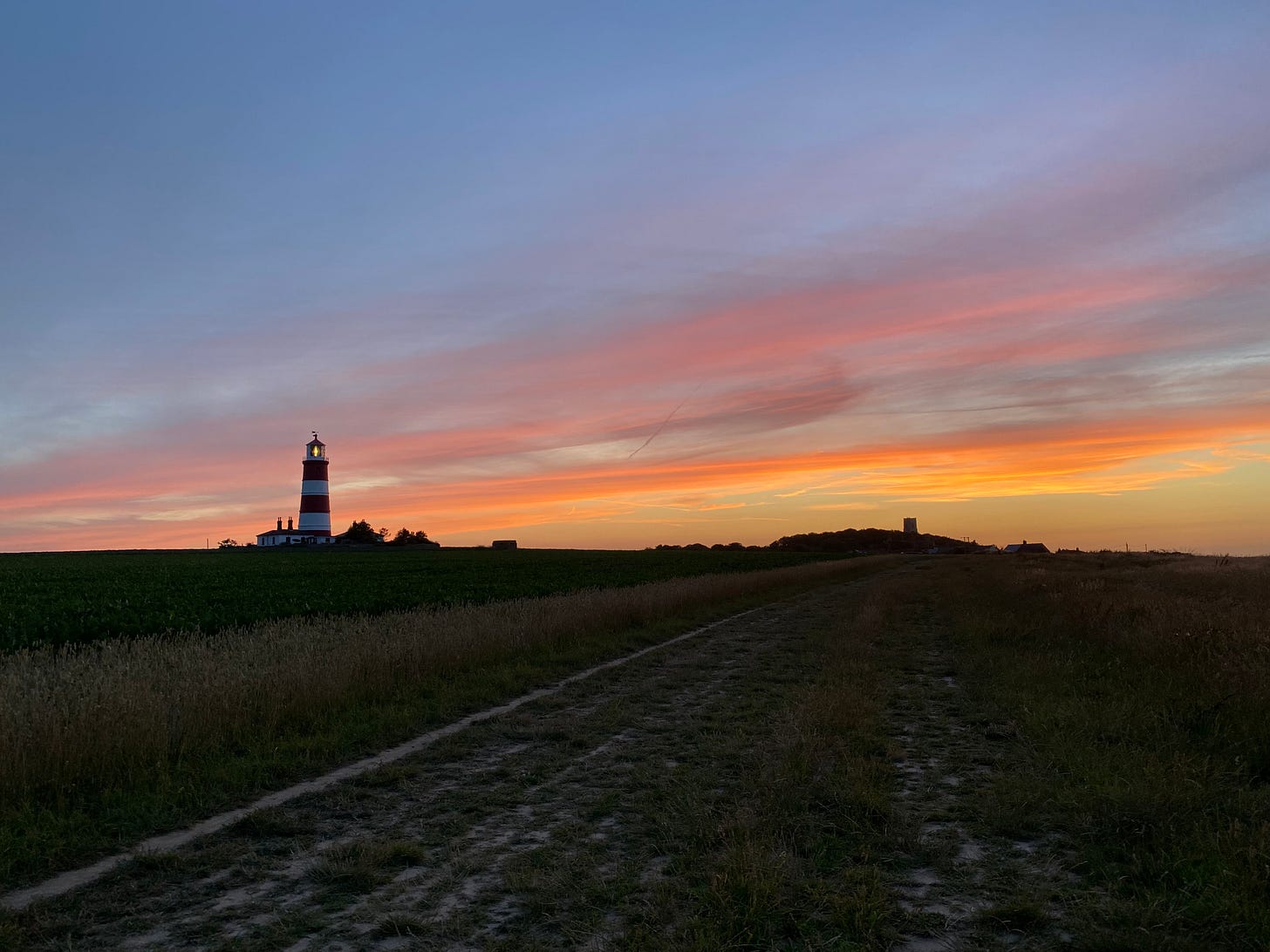
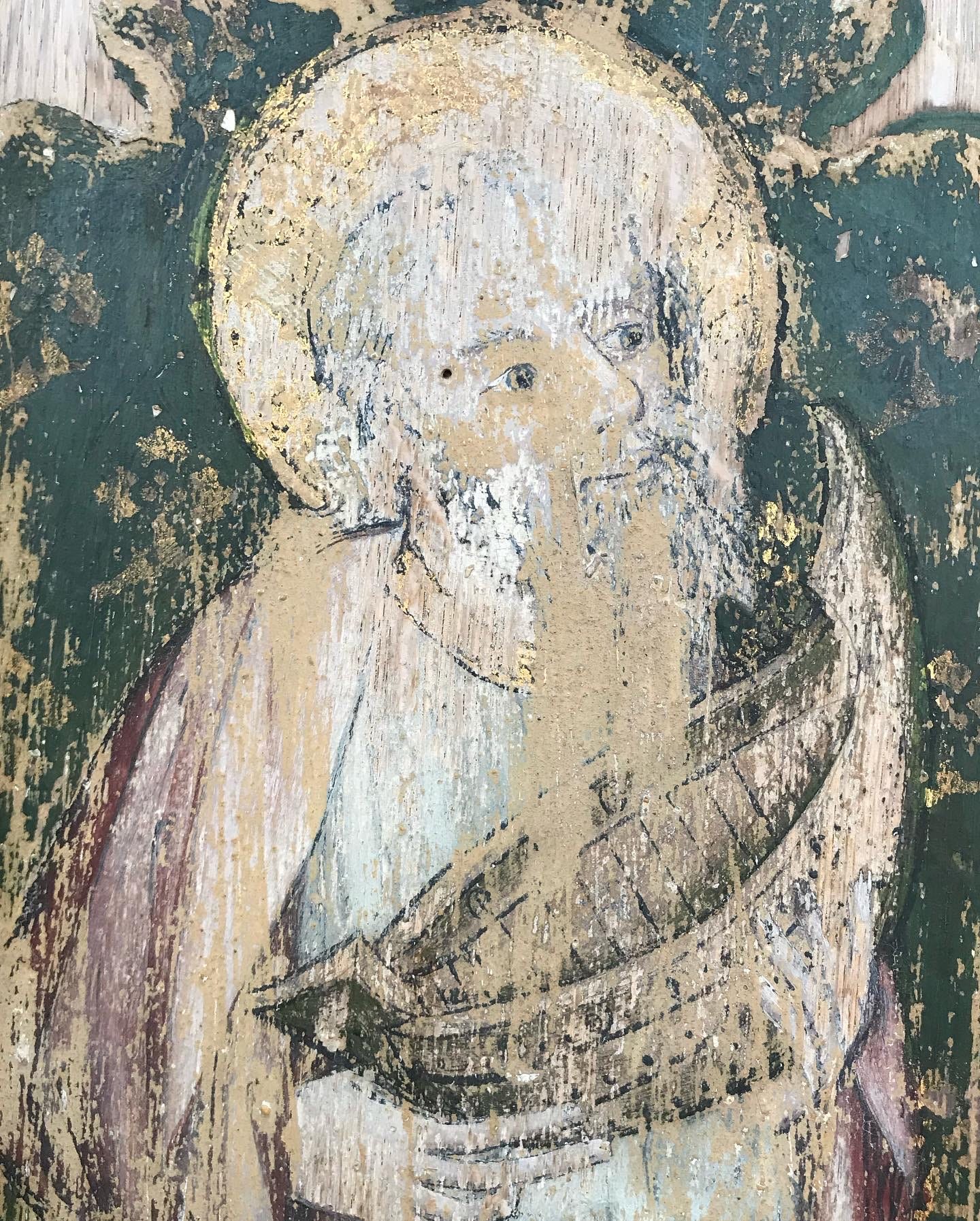
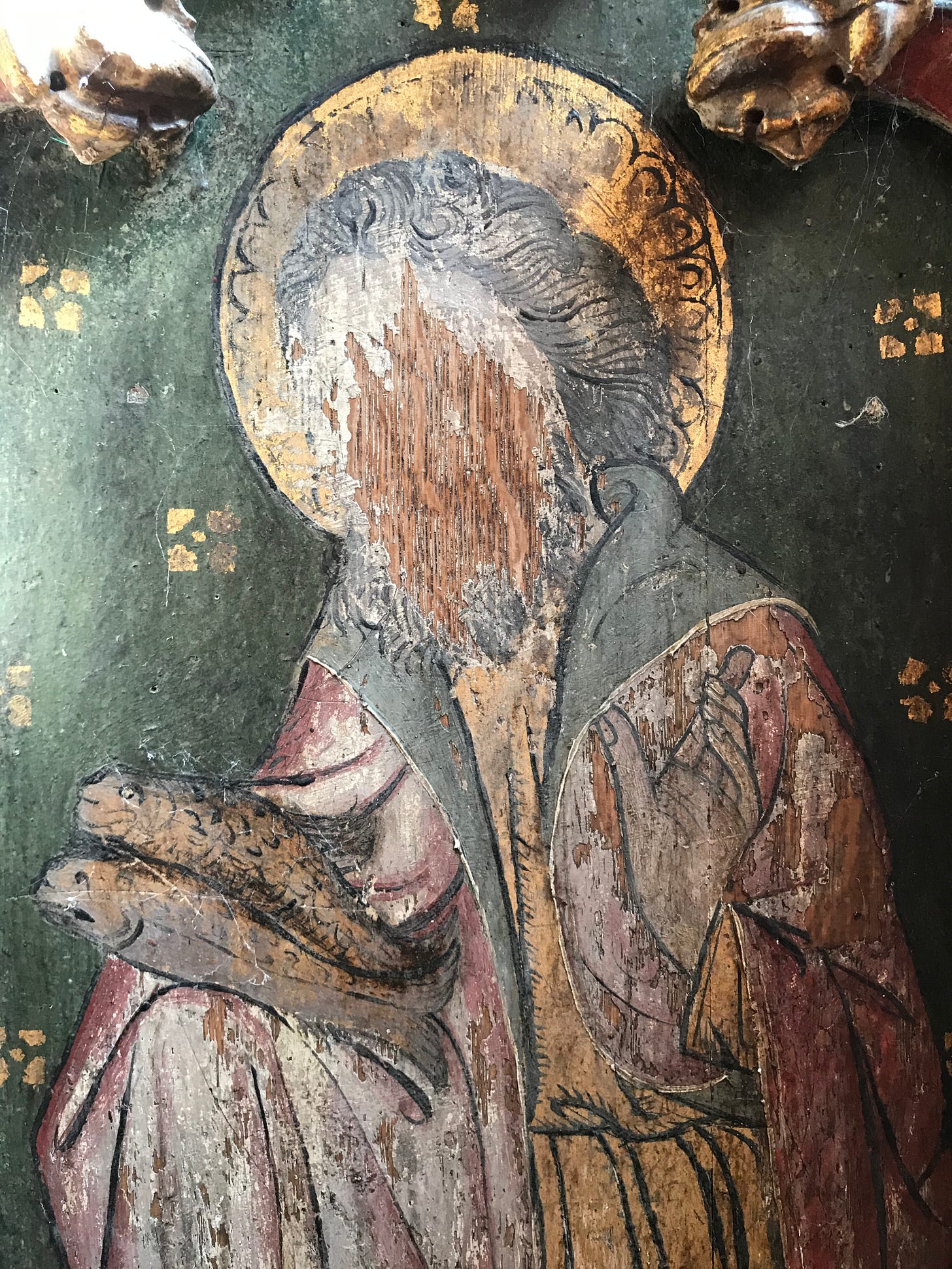
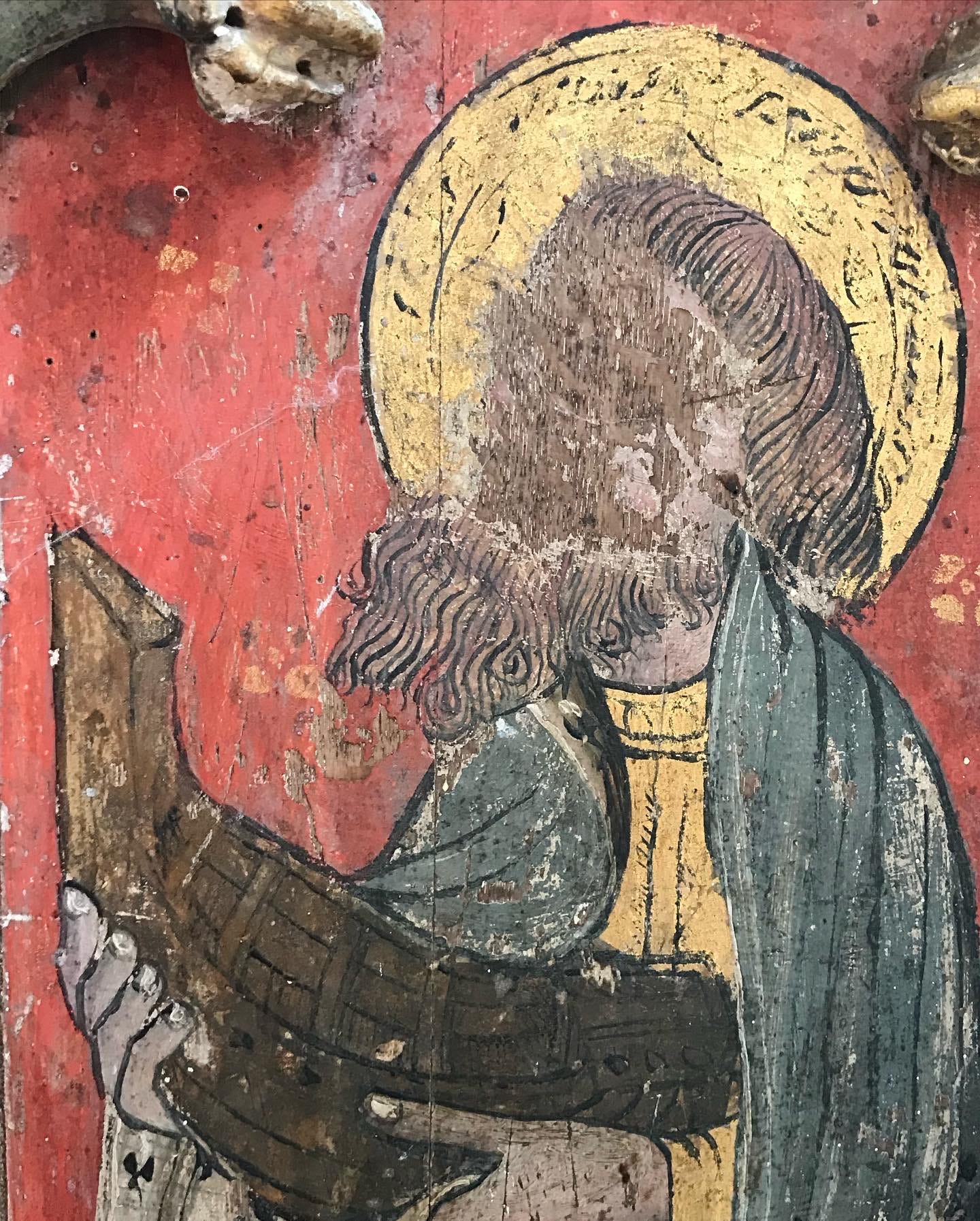
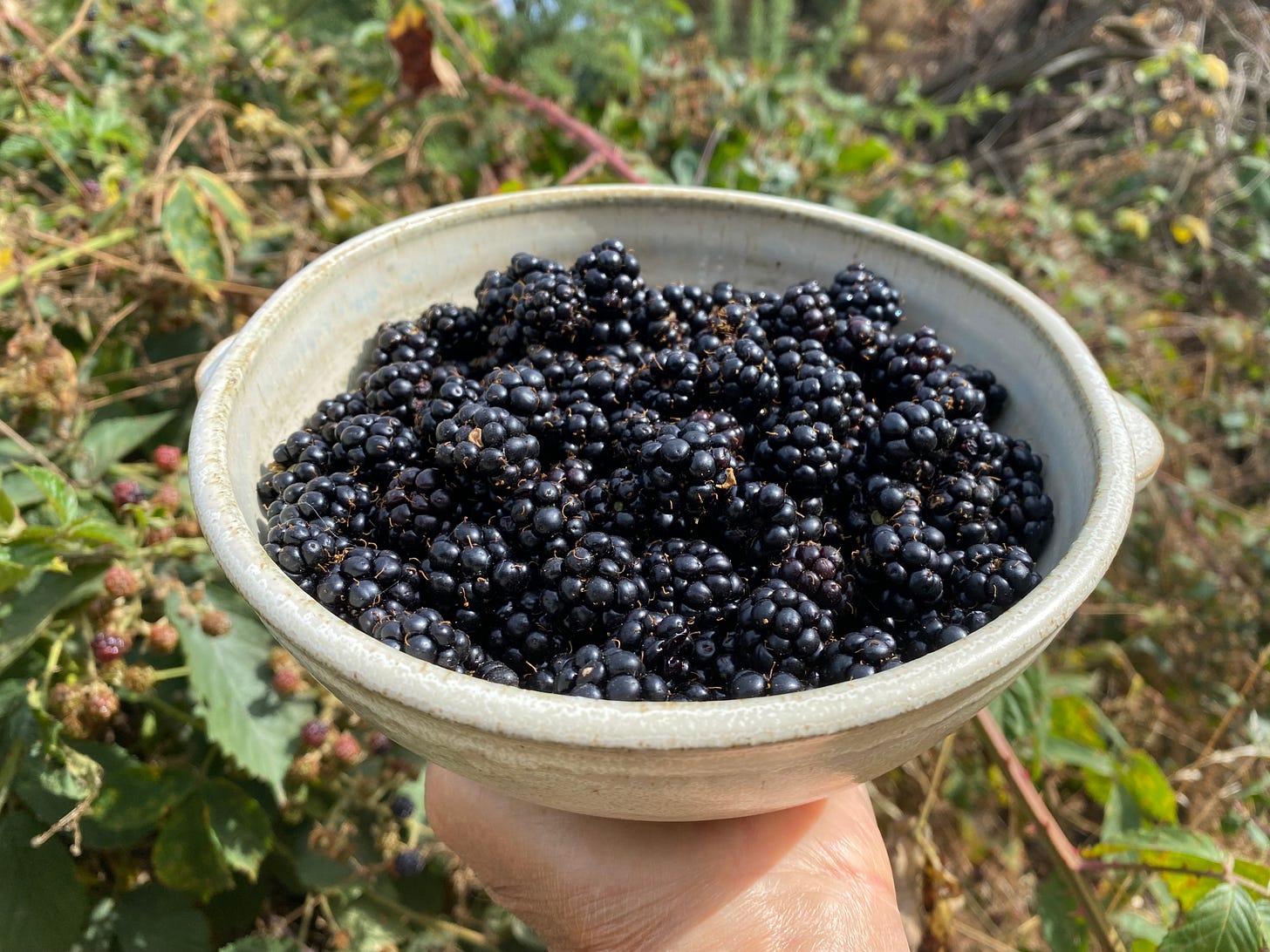
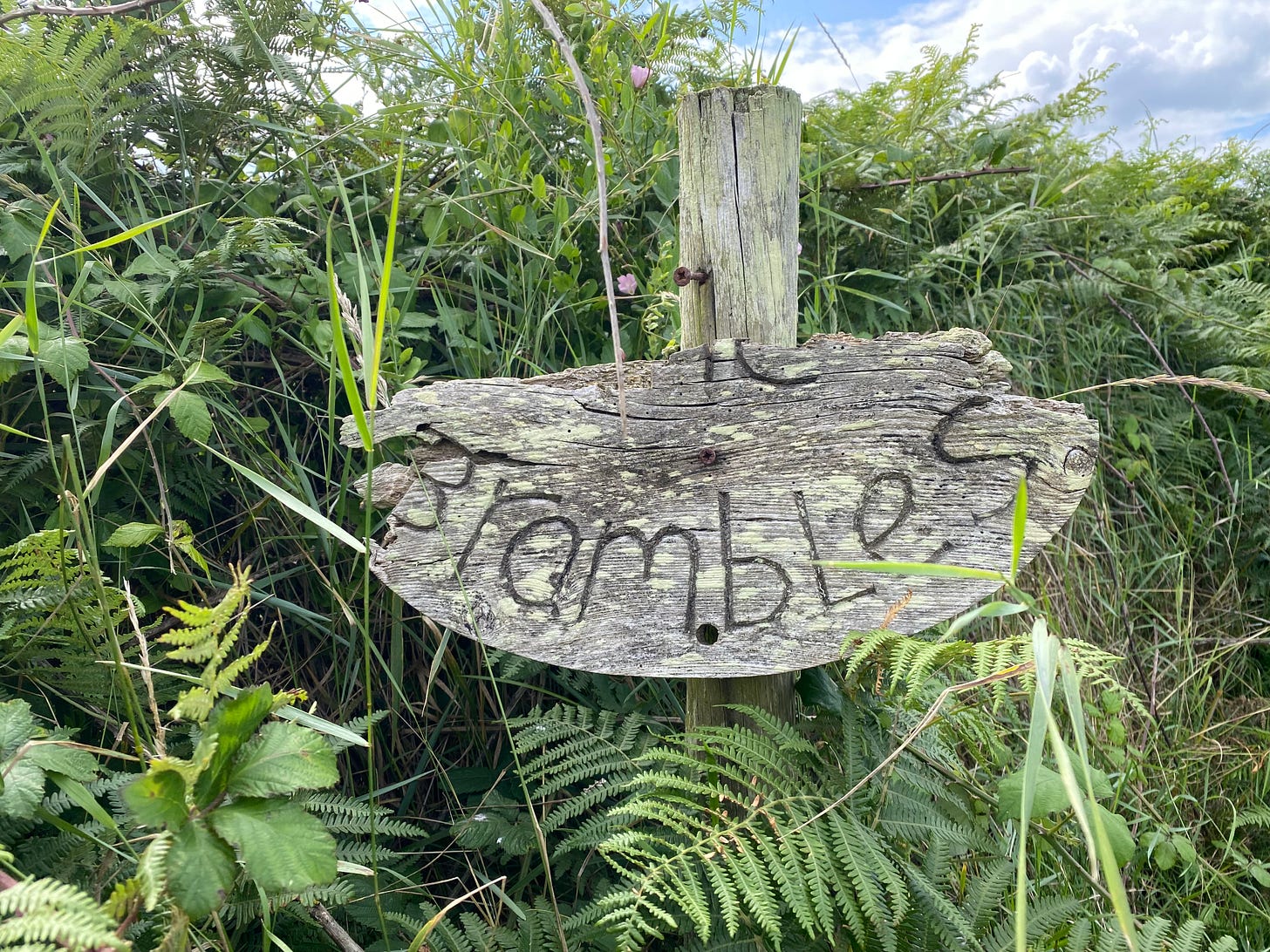
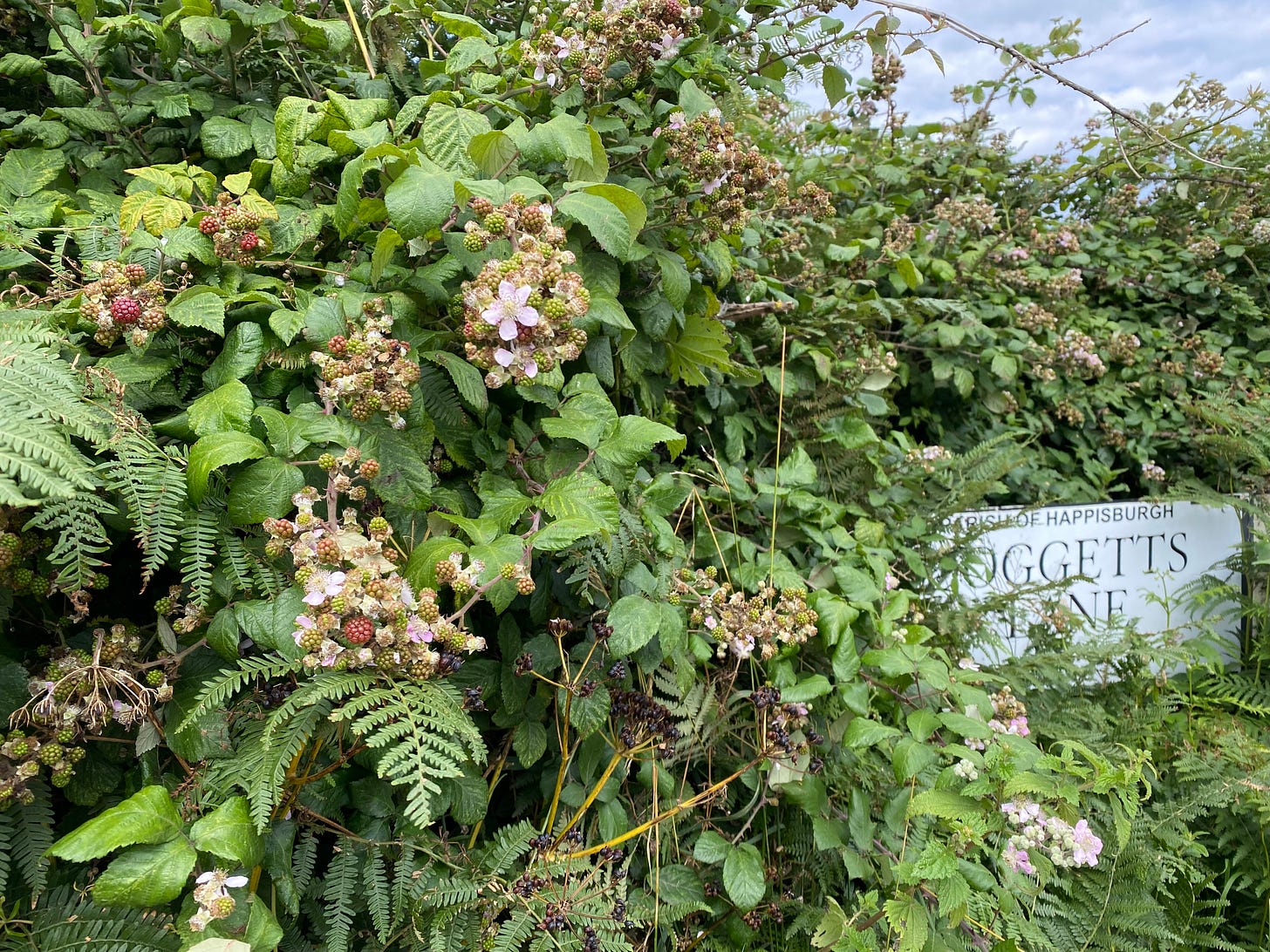
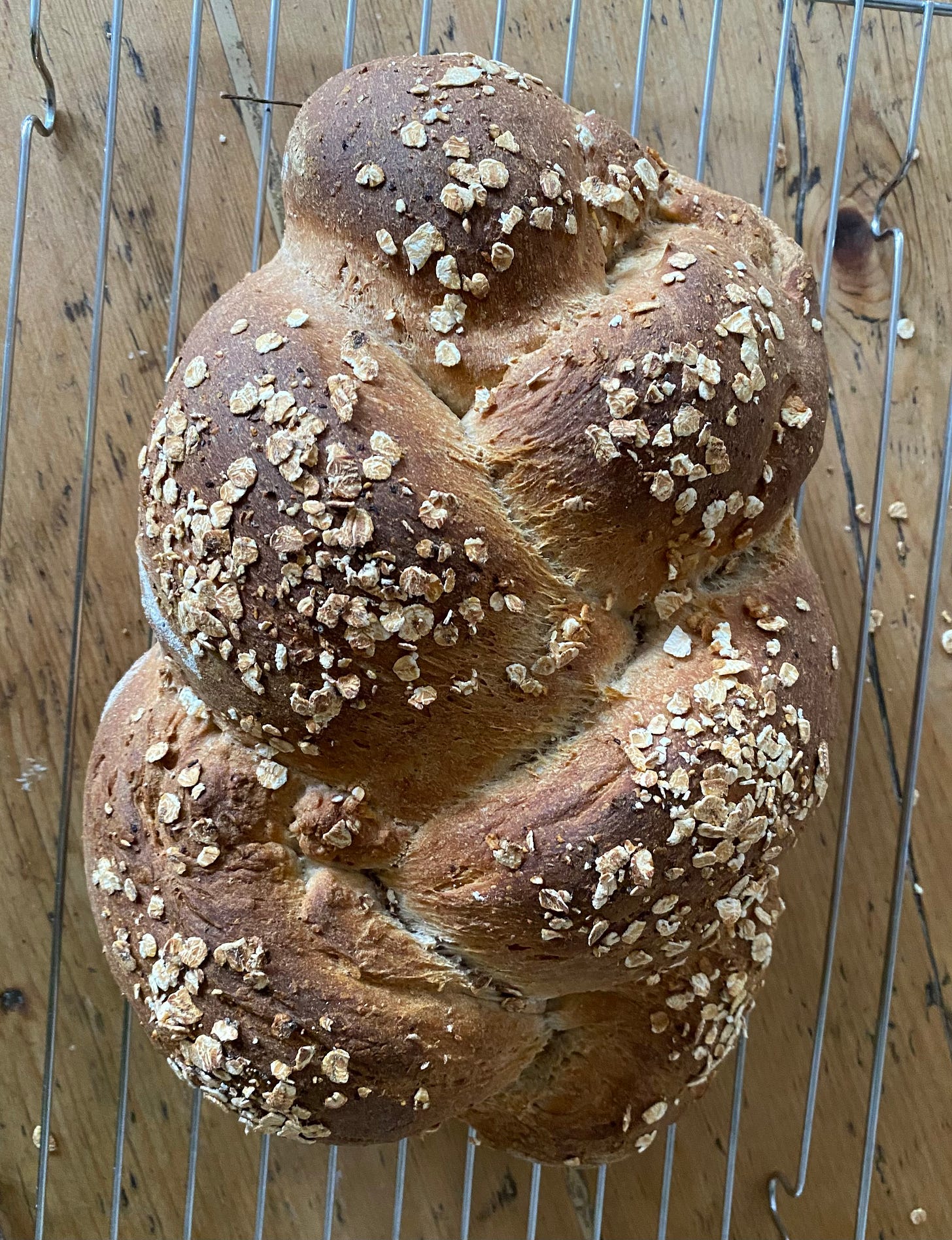
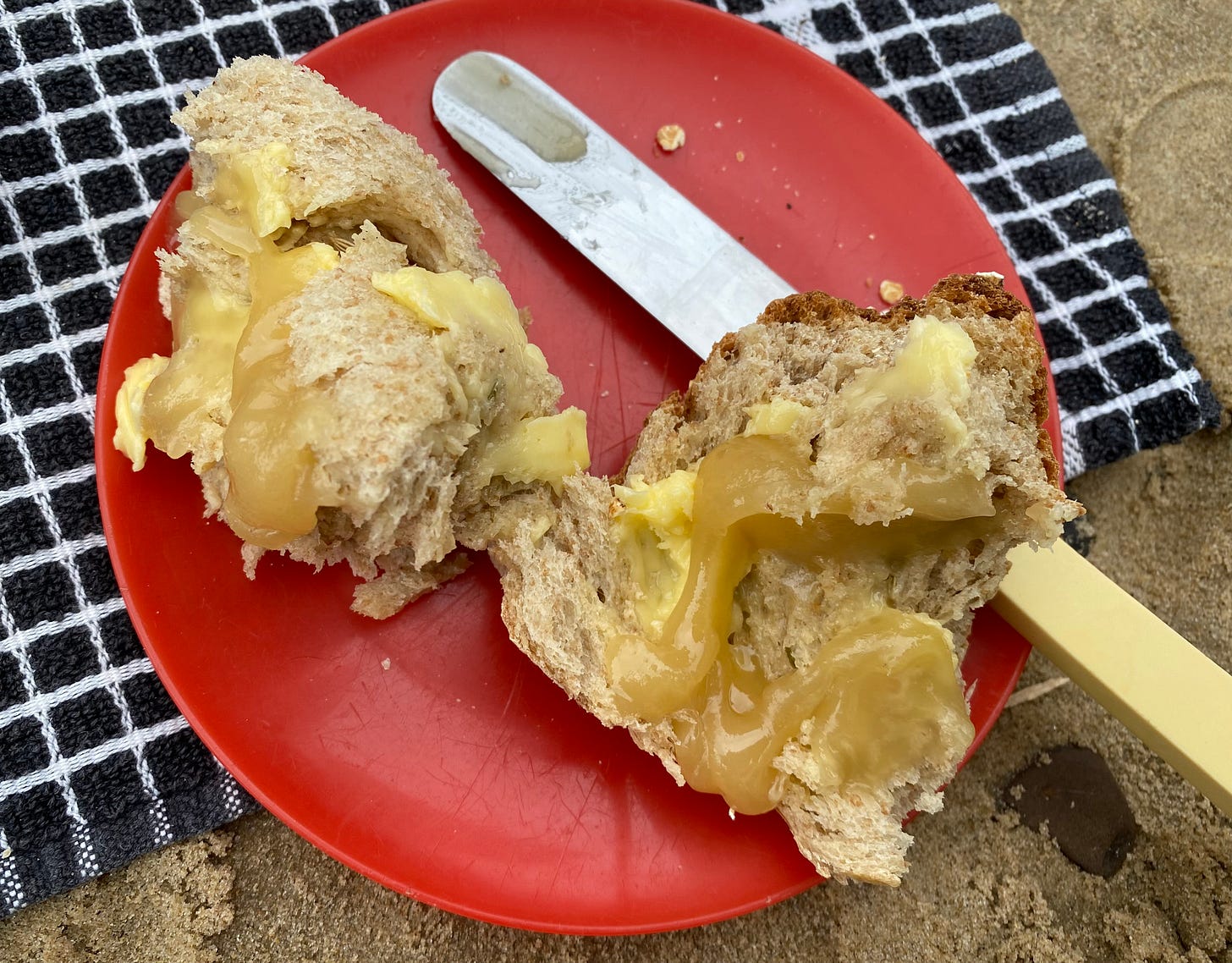
So lovely to read your beautiful words Imogen, I felt weary yesterday and had no energy for my usual Lammas shenanigans, I managed a short walk and gathered some wheat and Rowan berries and made a little “thing” to hang in my front porch, my daughter bought me sunflowers and I also had a little harvest from the allotment, now I’ve typed these words out I realise what I did was enough, it was a gentle day of gratitude. Disappointed about the cloud cover and not seeing the Moon last night but the energy was there for sure, I’m feeling a little more energetic today so hope to make bread and will try your recipe as it sounds so good and easy. Thank you once again for sharing such magical moments. Lammas blessings to you 🌾🌻🌞
Hello Imogen. Thank you for Beautiful writing for Lammas. It’s the time of true golden days, golden grasses, flowers, skies. I enjoyed the poem with the Lions. Today I pick the first blackberries, which suddenly appeared after the first rain we’ve had in three months! Blessings to you on this super moon.